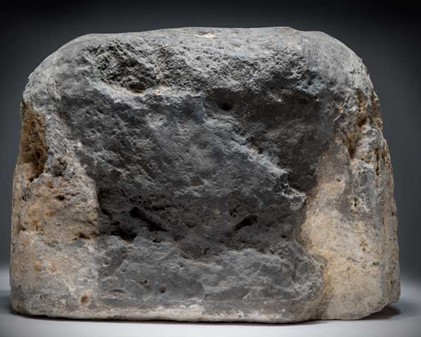Almost down at ground level along London’s Cannon St you’ll find the ‘London Stone’.
Virtually invisible behind it’s heavy iron grill, this piece of oolitic limestone sometimes known as the ‘Stone of Brutus’ has various tales attached to it – some say that it is all that remains of a neolithic stone circle and some, rather more romantically, insist that it is the stone from which King Arthur drew his sword Excalibur. What all the stories agree on however is that if it is ever removed from the City of London, London will fall…

Up until fairly recently you could get a much better look at it, as the shop which currently has a ‘To Let’ sign was a sports outlet and from the interior the stone is only protected by one sheet of plate glass. This site was due to be redeveloped but that seems to have stalled, which is a shame because they were planning to move it just across the street to form the centrepiece of a new building, where it would have been in a much more prominent position. This proposal caused some consternation amongst conservation groups, however the reality is that the ‘London Stone’, or ‘Stone of Brutus’, has been moved several times in the past – the first recorded instance being in 1742 when it was moved from the centre of the road to stand next to St Swithun’s Church, which has since been demolished.
It has certainly been on Cannon Street for some considerable time because references to it appear in accounts dating back to 1188, but how many centuries it has stood there altogether is anyone’s guess. For anyone venturing along to see it who is suddenly struck with the need to imbibe, there’s a rather quirky ‘gothic’ basement bar just two doors down which opened fairly recently, funnily enough called ‘The London Stone’.
